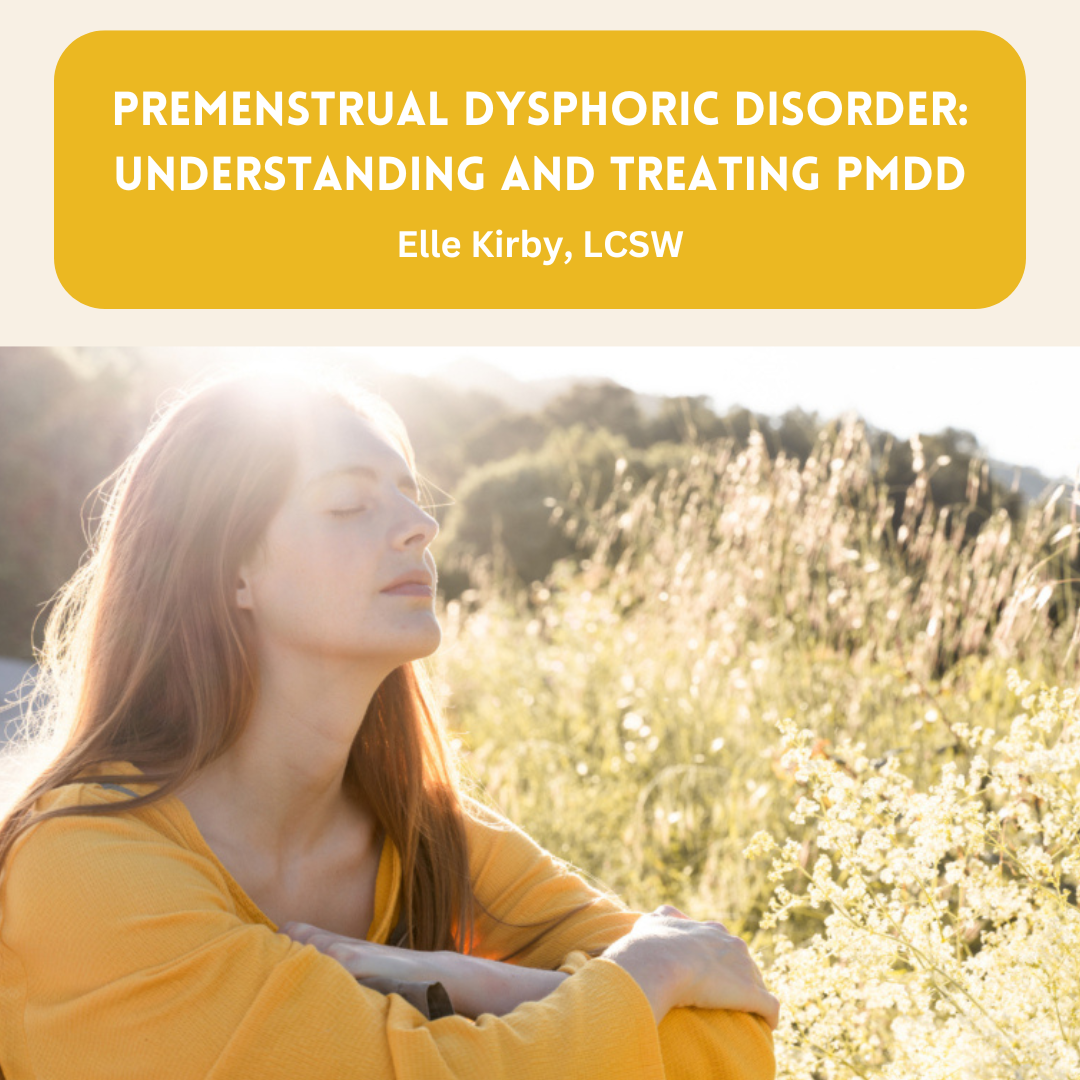Premenstrual Dysphoric Disorder: Understanding and Treating PMDD
For many people who menstruate, experiencing mood swings, irritability, and discomfort before their period is a regular part of the menstrual cycle. However, for some, these symptoms are so severe that they interfere with daily life. This condition is known as Premenstrual Dysphoric Disorder (PMDD), and it is more than just a severe case of premenstrual syndrome (PMS).
If you’ve ever wondered why your mood can fluctuate drastically, or why you feel overwhelmingly depressed or anxious in the days leading up to your period, PMDD might be the cause. In this post, we’ll dive into what PMDD is, how it differs from PMS, its symptoms, and how it can be managed.
What is PMDD?
Premenstrual Dysphoric Disorder (PMDD) is a severe form of premenstrual syndrome (PMS) that causes debilitating physical and emotional symptoms. Unlike PMS, which can include mild mood swings, bloating, and fatigue, PMDD causes intense symptoms that can severely disrupt your daily life. The emotional symptoms associated with PMDD are especially pronounced and may include deep depression, suicidal ideation, irritability, anxiety, and extreme mood swings.
PMDD typically occurs in the luteal phase of the menstrual cycle (the two weeks before menstruation begins), and symptoms generally subside once menstruation starts. However, the intensity of the symptoms can make it hard for those living with PMDD to function in their personal, professional, and social lives.
How Does PMDD Differ from PMS?
While PMDD and PMS share some common symptoms—such as irritability, bloating, and fatigue—there are key differences that set them apart:
Severity: The symptoms of PMDD are much more intense and can significantly affect a person’s ability to perform daily tasks. PMS typically involves mild to moderate discomfort, while PMDD can cause symptoms that are severe enough to disrupt work, relationships, and the overall quality of one’s life.
Emotional Symptoms: PMDD is marked by extreme emotional distress, such as feelings of hopelessness, anger, extreme mood swings, anxiety, and depression. PMS, on the other hand, may involve irritability or sadness, but not to the same debilitating extent.
Duration: PMDD symptoms usually begin 7 to 10 days before menstruation starts and end within a few days after the period begins. PMS may last for a longer period but is usually less disruptive.
Symptoms of PMDD
The symptoms of PMDD can be both physical and emotional, and their intensity can vary from person to person. The most common symptoms include:
Emotional and Behavioral Symptoms:
Severe mood swings: Extreme shifts from feeling “normal” to feeling irritable, angry, or weepy.
Depression: Feelings of hopelessness, sadness, or extreme low mood.
Anxiety: Heightened feelings of anxiety, nervousness, or tension.
Irritability or anger: A short temper or feelings of frustration that can feel out of control.
Social withdrawal: A desire to isolate oneself from others or avoid social interactions.
Difficulty concentrating: Cognitive symptoms like “brain fog,” trouble focusing, or forgetfulness.
Physical Symptoms:
Fatigue: Extreme tiredness or lack of energy, even after adequate sleep.
Sleep disturbances: Trouble falling asleep or staying asleep or feeling unrefreshed upon waking.
Headaches: Severe headaches or migraines, often exacerbated by hormonal fluctuations.
Joint or muscle pain: Generalized aches and pains in muscles or joints.
Bloating and weight gain: Fluid retention can cause a feeling of heaviness or puffiness.
Changes in appetite: Cravings for certain foods, particularly sweets or salty foods, or a loss of appetite.
Causes and Risk Factors
The exact cause of PMDD is still not fully understood, but research suggests that hormonal fluctuations play a significant role. Specifically, it is believed that PMDD is linked to an abnormal response to the hormonal changes that occur during the menstrual cycle, particularly the rise and fall of estrogen and progesterone. Other contributing factors may include:
Genetics: Some people may be more genetically predisposed to developing PMDD, particularly if there is a family history of the disorder or other mood-related conditions.
Neurotransmitter imbalances: Abnormalities in serotonin (the “feel-good” neurotransmitter) levels may contribute to the emotional symptoms of PMDD.
Underlying mental health conditions: People with pre-existing conditions like depression or anxiety may be more likely to develop PMDD or experience more severe symptoms.
How Is PMDD Diagnosed?
PMDD is typically diagnosed based on the presence of specific symptoms that align with the disorder. A healthcare provider will usually assess your menstrual cycle history, symptoms, and how these symptoms affect your daily life. The key to diagnosing PMDD is the pattern of symptoms—i.e., that they consistently occur in the luteal phase of your cycle and disappear once menstruation begins.
Since PMDD shares symptoms with other mood disorders, such as depression or anxiety, it can sometimes be mistaken for other conditions. It’s important for anyone experiencing PMDD-like symptoms to seek an evaluation to rule out other possible causes.
Treatment and Management of PMDD
While PMDD can be challenging to manage, there are several treatment options available. The best approach will depend on the severity of your symptoms, your lifestyle, and your personal health history. Here are some common treatment options:
Lifestyle Changes
Diet: Eating a balanced, nutrient-rich diet may help manage PMDD symptoms. Some people find relief by reducing caffeine, sugar, and alcohol intake or increasing the consumption of magnesium-rich foods.
Exercise: Regular physical activity, particularly aerobic exercises like walking, cycling, or swimming, can help boost mood and alleviate physical symptoms like fatigue and bloating.
Stress management: Relaxation techniques like yoga, meditation, deep breathing, or progressive muscle relaxation can help reduce anxiety and stress levels.
Medication
Selective serotonin reuptake inhibitors (SSRIs), which are commonly used to treat depression and anxiety, are also effective for managing PMDD-related mood symptoms.
Medications like fluoxetine (Prozac), sertraline (Zoloft), and citalopram (Celexa) are the first-line antidepressants prescribed for PMDD. SSRIs work by increasing serotonin levels in the brain, which can help alleviate the emotional and physical symptoms of PMDD.
These medications may be taken daily or only during the luteal phase (the two weeks before menstruation), depending on the severity of symptoms and the patient's response to treatment.
Therapy and Counseling
Cognitive Behavioral Therapy (CBT): CBT can help manage negative thought patterns and emotional responses associated with PMDD, particularly its emotional and psychological symptoms like depression, anxiety, and irritability. CBT aims to help individuals identify and change negative thought patterns and behaviors that exacerbate symptoms.
Somatic therapy: Somatic therapy works by helping individuals become more attuned to their body's sensations, which can support the regulation of the nervous system. By focusing on bodily awareness and using techniques like deep breathing, grounding exercises, and body scans, this therapy can help reduce the physiological tension that exacerbates emotional distress. Somatic practices such as gentle movement, breathwork, and massage can help alleviate the physical symptoms of PMDD, such as abdominal pain, bloating, and muscle tension.
Conclusion
PMDD is a severe and often debilitating condition that goes beyond the typical premenstrual discomfort many experience. While the exact cause is not entirely understood, PMDD is linked to hormonal changes and neurotransmitter imbalances that cause intense emotional and physical symptoms. If you suspect you may have PMDD, it’s important to speak with a healthcare provider for an accurate diagnosis and to explore treatment options that can help you manage the condition.
If you're struggling with severe symptoms, you’re not alone—and there is help available. Whether it’s through lifestyle adjustments, medication, or therapy, managing PMDD is possible, and finding the right combination of treatments can greatly improve quality of life!


